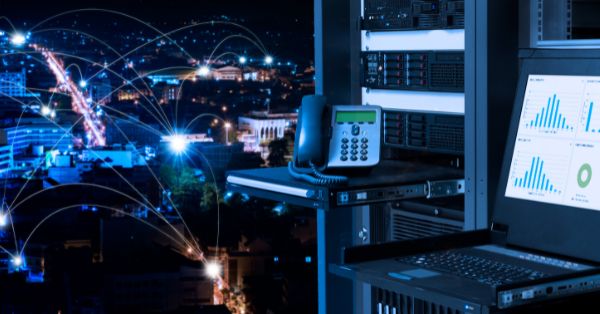Overview of the 5G-powered robot for responding to coronavirus
SK Telecom and Omron Electronics Korea have jointly developed a 5G-powered autonomous robot for responding against coronavirus in a systematic and efficient way.
The 5G-autonomous robot leverages technologies such as 5G, AI, autonomous driving, and IoT to carry out diverse activities such as
- Contactless temperature screenings for visitors
- Disinfection of the building
- Scanning for people not wearing masks
- Identify locations where people are gathered to stress the importance of social distancing
Contactless temperature screenings for visitors
The robot is designed to detect and automatically moves towards incoming visitors to check their body temperatures using a thermal imaging camera. In case the measured temperature is 37.5°C (99.5°F) or higher, it sets off an alarm and sends alerts to the control center via a 5G network.
Based on this data transmitted over 5G network in real-time, SK Telecom will be able to take necessary measures like prohibiting people with suspicious symptoms from entering the building, among others.
Disinfection of the building
Equipped with UV lamps and two automatic floor disinfectant sprayers, the robot automatically disinfects the building. It can achieve 99.9 percent disinfection of 33 square meters of surface areas in just 10 minutes.
Both companies plan to deploy the 5G-powered robot at their headquarters first and will officially launch the device in Korea this year and in global markets next year.
Stress importance of social distancing and scanning for people not wearing masks
The 5G robot has SK Telecom’s self-developed AI-based video analysis solution built into it, enabling it to identify places where people are gathered and then move to the location to play a message stressing the importance of social distancing. It will also identify people who are not wearing face masks and request them to wear one.
Operation & Management of 5G-powered robot
SK Telecom will ensure greater efficiency in both operation and management of the robot through the application of its big data analytics solution Metatron.
Metatron will analyze the robot’s component management data collected via IoT sensors to check the real-time status of the robot and perform predictive maintenance.
SK Telecom provided 5G connectivity for 5G-powered robot
SK Telecom and its affiliates operate diverse ICT businesses from telecommunications businesses to new ICT businesses including media, security, IoT, and mobility. Equipped with the world’s top-class technological capabilities in 5G, AI, big data analysis, IoT, and quantum cryptography communications, SK Telecom is solidifying its position as a global ICT leader.
“We are seeking ways to help relieve the unprecedented situation brought by the coronavirus,” said Choi Nag-hun, vice president and head of the industrial data business unit of SK Telecom. “We will continue to introduce diverse services fit for the non-face-to-face era by leveraging our ICT including 5G and AI.”
So far, the robots have only been deployed at SK Telecom’s headquarters. The company said it would launch the robot for sale in South Korea in the second half of the year and has plans to begin exporting them abroad next year.
Omron Electronics Korea
Omron Electronics Korea Co.,Ltd. (Seoul) is an enterprise located in South Korea, with the main office in Seoul. It operates in the Household Appliances and Electrical and Electronic Goods Merchant Wholesalers industry. Omron Electronics Korea Co., Ltd. (Seoul) was incorporated on April 03, 2006.
Kim Young-ho, president of Omron Electronics Korea, echoed the same sentiment. “The 5G autonomous robot is an innovative case where cutting-edge technologies have been applied to overcome the crisis caused by the coronavirus,” he said. “The collaboration between Omron Electronics Korea and SK Telecom will serve as a great example showing how businesses can contribute to resolving social issues.”
Benefits of the 5G-powered robot for responding to coronavirus
It will reduce the workloads of people who are performing monitoring duties amid the COVID-19 pandemic





















